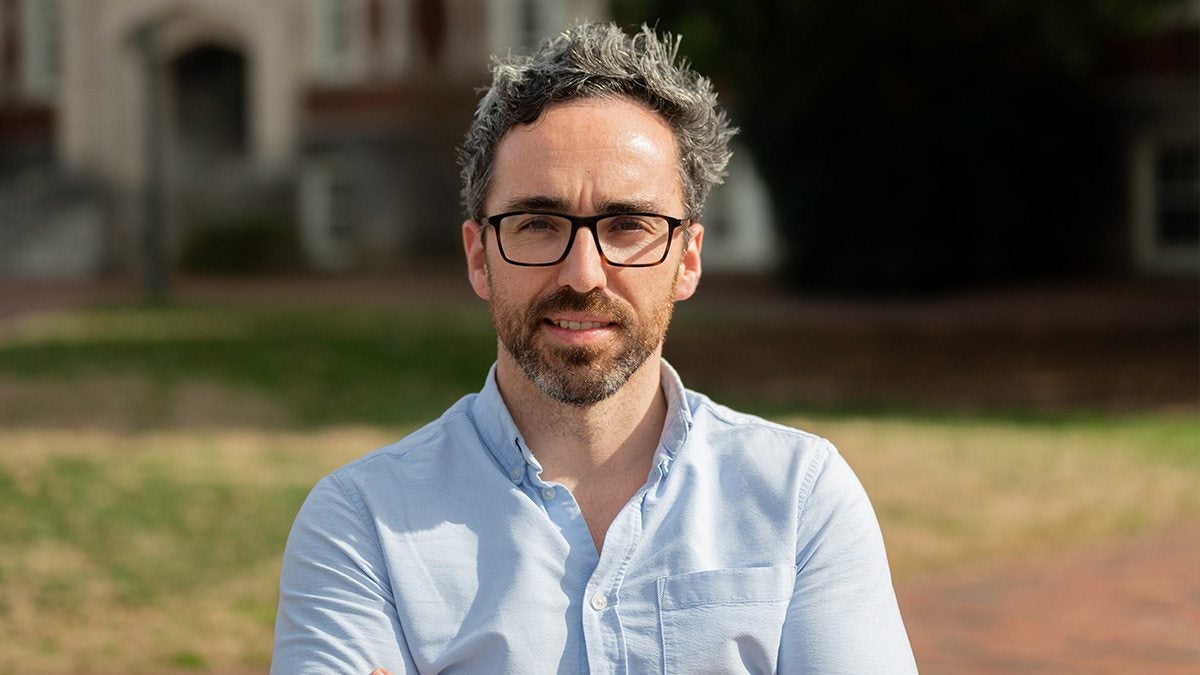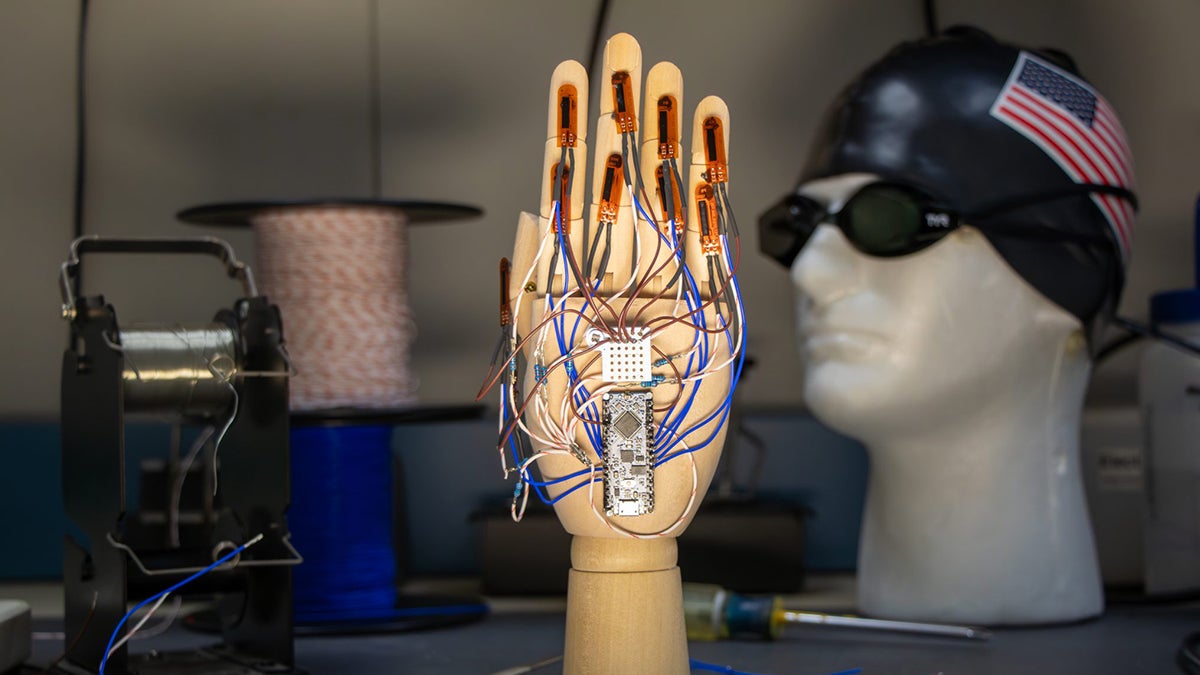Onetime ‘country boy’ from Spain knows why bubbles ‘gallop’
Pedro Sáenz’s Physical Mathematics Lab at Carolina made a discovery about fluid mechanics that eluded scientists for centuries.

While there’s no mathematical formula to explain destiny, that’s how Carolina researcher Pedro Sáenz describes his journey from northern Spain to UNC-Chapel Hill.
Sáenz grew up in La Rioja, Spain, in Viguera — a village of fewer than 400. His father was a farmer, his mother a factory worker. Neither graduated from high school. Sáenz spent his youth doing physical labor and tending to cows.
“My life was about using a pitchfork and stacking hay bales and sacks of grain,” Sáenz said. “I was never meant to live abroad. I was never meant to be a scientist.”
Yet now Sáenz is an assistant professor of mathematics in the UNC College of Arts and Sciences and leads Carolina’s Physical Mathematics Laboratory. His work has drawn national attention. The National Academy of Sciences named Sáenz a 2025 Kavli Fellow — one of 88 of the nation’s brightest young scientists from industry, academia and government.
Thinking about the “overwhelming” honor, Sáenz almost feels like an imposter —an inferiority complex rooted in his humble origins. He shares his story of perseverance with his students to inspire them.
“I was the first in my family to go to college, and that was already a huge accomplishment,” Sáenz said. “And then life took me on this very intricate path, which I had never imagined.”
After earning his bachelor’s and master’s degrees at the University of La Rioja, Sáenz wanted to turn his deep love of research and gift for scientific thinking into a career on the global stage.
Determined to learn English, Sáenz moved to Scotland, took a part-time job at a grocery store and spent the rest of his time studying the language. On his way to work, he passed the beautiful castle-like buildings of the renowned University of Edinburgh and wondered what it would be like to study there.
That dream came true, and Sáenz earned his doctorate in fluid mechanics from Edinburgh in 2014. He went on to teach for four years at the Massachusetts Institute of Technology before joining Carolina’s faculty in 2019.
“I had people telling me that I would not be able to take this path,” Sáenz said. “Once I realized that I actually had the capacity, by some twist of destiny, my passion became twofold: the pursuit of meaningful science and motivating others to follow their dreams — no matter how humble their origins.”
The power of bubbles
In Sáenz’s lab, he and his team tackle bold, ambitious questions, engaging in fundamental research that explores soft and active matter, hydrodynamic quantum analogs, fluid mechanics and more.
One of the lab’s most recent and widely publicized discoveries addresses a topic that has confounded scientists since the days of Leonardo Da Vinci: bubble mechanics.
The discovery came about almost by accident. While Sáenz’s postdoc filled a chamber with fluid for another experiment, a leak caused a bubble to form. When they vibrated the chamber vertically, the bubble started moving horizontally back and forth — much to the researchers’ surprise.
“Because we are trained in fluid mechanics, we immediately asked ourselves, ‘Hold on, why is that bubble moving like that? It cannot be by chance,” Sáenz said. “The first thing I told my students is that someone probably discovered this 50 years ago.”
But after much research and collaboration with Princeton’s Howard Stone, Sáenz and his group members couldn’t find any previous studies that explained the bubble’s motion. Through a combination of experimentation, theory and numeric simulation, they discovered the mechanisms behind these “galloping bubbles,” writing a study published in February by the prestigious international science journal Nature Communications.
The study introduces an entirely new way to control bubble motion: leveraging a fluid instability to direct bubbles in precise ways.
Harnessing the locomotion of bubbles could have many applications, from cleaning surfaces to improving cooling systems for microchips, especially microchips in zero-gravity environments like space, which has no buoyancy to remove bubbles from heating sources naturally.
Proud from afar
While Sáenz pushes the boundaries of quantum and classical mechanics at UNC-Chapel Hill, his parents still live about 20 minutes away from the village where Sáenz grew up. Now retired, they grow much of the produce they consume. They don’t fully understand the finer points of their son’s work, and Sáenz jokes that they couldn’t find North Carolina on a map.
Yet Sáenz can feel his family’s pride and support for his journey from “country boy” to decorated scientist. Sáenz said the recent Kavli Fellow honor feels especially meaningful.
“My parents are proud to see their child trying to do something different, trying to explore things that maybe people back home don’t believe they can do,” Sáenz said. “They sacrificed a lot to give my siblings and me an education. So when I shared news about these awards, it’s because, to me, that’s how I pay them back.
“They feel that pride, that happiness, through me. And for me, that’s a responsibility I carry for them.”


